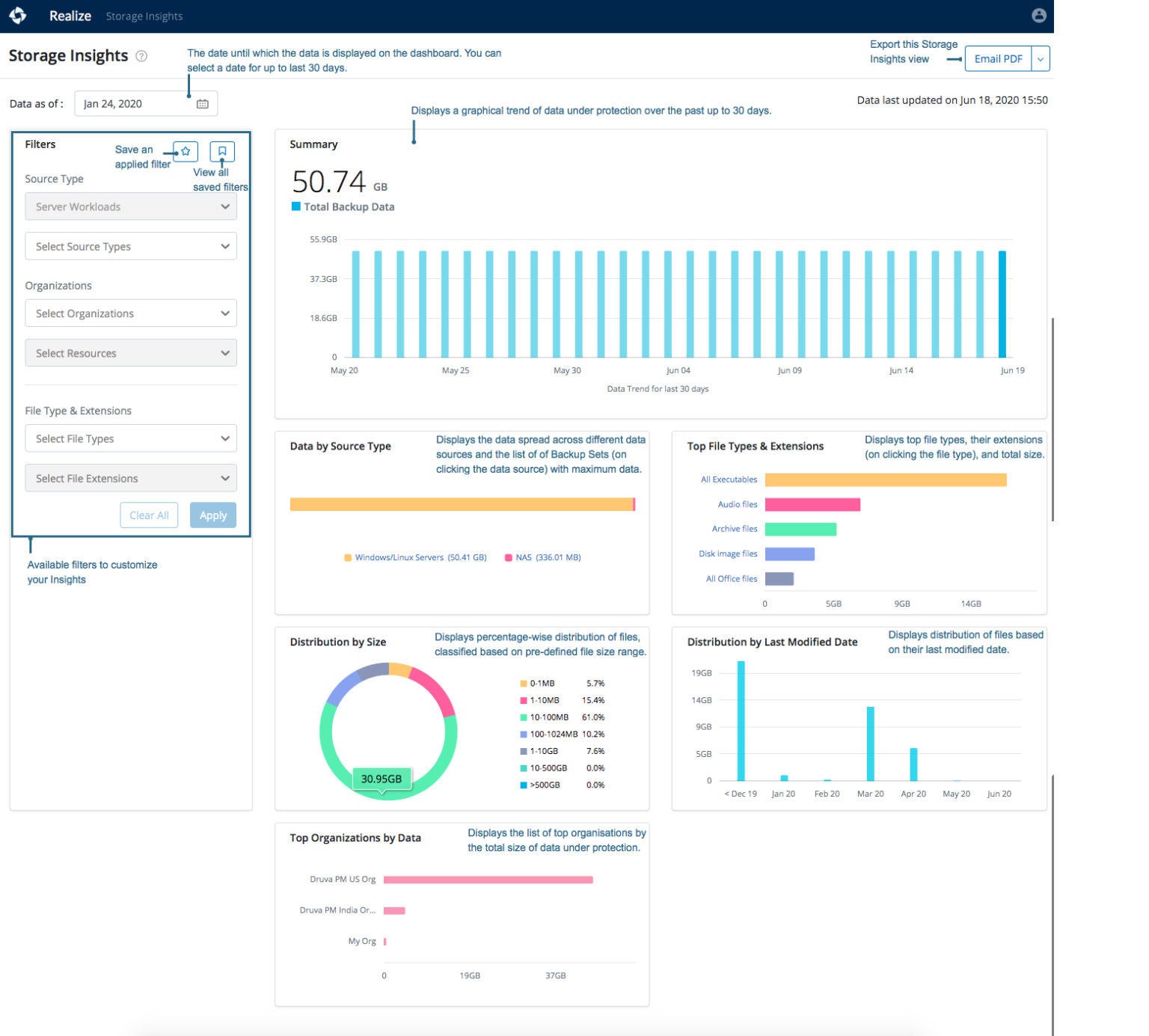Unstructured data is growing by leaps and bounds. According to a 2020 Gartner report, they project that by 2024 large organizations will triple their unstructured data stored as file or object storage on-premises, at the edge, or in the cloud.* A large amount of unstructured file data lives on network attached storage (NAS) and protecting this data both for compliance and DR purposes remains overly complex and expensive.
Today, Druva announced an industry first by introducing a cloud-based, integrated backup and archive solution for NAS systems. What makes Druva different from previous approaches is our ability to harness the economics and scale of the cloud to help customers adapt more quickly so they can reduce complexity & cost, improve cyber resilience, and accelerate cloud projects.
Organizations applying the 3-2-1 backup principle to NAS data (3 copies of data, 2 different media, and one offsite) face increasing storage costs and the added concern of cyber security risks such as ransomware to file-based backups. Deploying and managing the on-premises infrastructure to maintain and secure this data across multiple sites for resiliency/disaster recovery and for long-term retention is difficult.
Druva is addressing these challenges with an integrated, cloud-based approach that offers:
- Simplicity & resilience – Eliminate or reduce on-premise storage, let the cloud help you scale, and ensure all file-based backup data reside both offsite and in immutable storage
- Intelligence – Don’t treat all NAS data the same during the backup process.
- Druva SmartScan uses machine learning and heuristics to identify changed data which can dramatically reduce scan times and improves overall performance.
- Empower IT teams to treat data with infrequent access and restore needs differently with the option to back up directly to a cold storage tier to further lower costs.
- Enable IT teams to automatically visualize, identify, and act on file-based trends within backup data with the goal of eliminating non-business critical backup data to improve performance and lower storage costs.
- Dramatic storage savings – Eliminate multiple copies, leverage global deduplication, and tap into lower costs with long-term retention (LTR) storage tiers.
In this update to the Druva Cloud platform, we delivered a 5x performance improvement vs. the previous release for backing up to a warm storage tier (S3). That helps customers get data to the cloud faster, which is always good. But let’s be clear, Druva is not trying to replace the role of local NAS snapshots or the use of replication for fast DR. If you’re already doing snapshots and replication, because you have demanding RPO / RTO or DR requirements, especially for the first 15-30 days, then your NAS vendor already helps you optimize storage & replication.
However, many customers have broader data management needs, beyond fast DR, like ransomware protection, greater resiliency, long-term retention, and catalog-based recovery from the cloud. Druva’s cloud-centric, integrated approach provides the scale and data reduction capabilities to enable customers to address their needs more easily and with less cost. One of our largest customers is protecting over a petabyte (PB) of NAS data today with Druva.
Long-Term Retention and Infrequent Access
Long-term retention (LTR) is one area that is particularly painful for customers. In a previous blog on long-term retention and NAS data, Stephen Manley, Druva’s Chief Technologist, talked about what makes long-term retention of NAS backup data so difficult – metadata – and why a metadata optimized backup solution like the Druva cloud will be the optimal approach moving forward.
Druva was the first backup vendor to automatically tier backup data in the cloud from warm storage to cold storage for long-term retention, apply global deduplication across all storage tiers, and automatically offer customers a 30% reduction in cost vs. traditional storage. One click automatically turns on the LTR functionality and the savings are immediate. What makes us different is the simplicity – there is nothing for customers to manage. Get more LTR details here.
However, we quickly heard from customers that they had some sets of unstructured data, for which they had very infrequent recovery needs. They did not want to treat all backup data the same. Instead, they wanted to make one backup copy of the data and keep it for 3, 5, 10 or more years with low expectations or needs for recovery. For these needs, we are introducing an infrequent access (IA) tier which allows customers to back up directly to cold-storage and save 50% over a traditional warm storage backup approach. Again, no cloud data management skills required and all of your data can be found in our catalog. This feature is currently in early access availability with GA expected in 1H 2021.
Storage Insights & Recommendations
Finally, what’s inside backup data, particularly unstructured file data, has always been a mystery to IT teams. Druva is introducing a storage Insights and recommendations capability to change this picture and enable IT teams to quickly take action. The new feature allows customers to optimize their backup costs by providing meaningful, actionable insights and recommendations that help eliminate non-business critical data from being backed up. The Insight capability, shown in the image below, is an interactive window into the black box of backup data.



